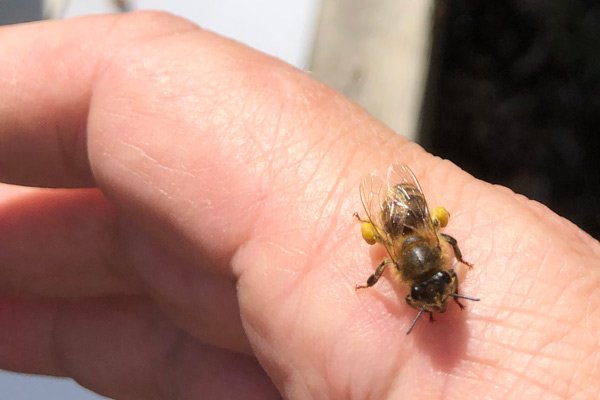
I was all set to sit down and write a serious, even weighty, column about the threat modern pesticides like neonicotinoids pose to the humble honeybee. About how these devastating chemicals wreak havoc with the finely-tuned navigation system that lets honeybees travel 5 miles from home, yet find their way back unerringly to the geographic pinpoint that is their hive. Maybe even about the efforts of pesticide makers to create a robotic bee to replace the living pollinators their products are killing.
But then the bees went off-script, so all that will have to wait. Spring has finally sprung, and everywhere I go lately it seems someone anxiously inquires: “How are the girls? Did they make it through the winter?”
Across the country, beekeepers are reporting around 40 percent of their hives did not make it through the winter. That’s a lot of bees. Imagine if 40 percent of the squirrel population died off over the winter. Then imagine that happened every winter and became the new normal. Because that has been the norm for beekeepers across the United States the past few years. Global warming, pesticides, varroa mites, stressful commercial beekeeping practices—the list of guilty parties goes on and on.
In our little bee-topia here, however, we beat the odds this year. All three hives made it through the winter—but not without drama, because, apparently, we are incapable of keeping bees without drama. Last fall, we got our first substantial honey harvest in the five years we’ve been keeping bees—5 delicious gallons of honey. And even taking those 5 gallons, we were absolutely positive we left the girls plenty to get through the winter. But during a brief thaw in late February, I peeked under the hood of each hive, and our strongest colony was in trouble. There were hundreds of dead bees on the inner cover, and a peek between the frames showed more dead and dying down below.
It was still way too cold to really go spelunking in the hive, even at 50 degrees, a fact I learned the hard way early in this beekeeping adventure. Toward the end of our second winter, I panicked when one hive had foragers happily coming and going, while the other sat there like a lump. So, figuring it must be fine to open things up since the girls from the other hive were out and about, I dove in to the lump. The good news was that everybody seemed fine. For some reason only the bees know, that hive just wasn’t ready to come out of its winter cluster and get to work. The bad news is that by opening it up, I chilled the hive, and they all ended up dead. So much for good intentions.
This time I just defrosted a sugar patty in the microwave and tucked it under the inner cover, keeping the cold intrusion to a few seconds. A couple of weeks later, during a slightly warmer spell, I gave them another sugar patty, but also added a top-feeder loaded up with sugar water, thinking that might be quicker for them to ingest than the caramel-like patty. And just to be safe, I gave the other two hives sugar patties as well—they’d made it this far, I certainly didn’t want to lose them now.
Fast forward to the arrival of “real” spring this week (not that fake date that came and went with no noticeable weather change in March), and the other two hives are in full forage mode, girls coming in loaded up with pollen from the crocuses and snowdrops in full bloom across the yard. In the hive that almost died, bees are coming and going through a very small secondary entrance at the top of the hive, but no action through the front door.
I pulled off the front door and started fishing around in the bottom of the hive with a long stick. I pulled out clumps of dead bees. Big clumps. Thousands of bees. Cleared the bottom board out, put the door back on, and waited for the girls to start using it. By the next day, still no action. It was nice and warm then, so I did a full inspection. The top box was in great shape—eggs and larvae, a queen that looked quite content, some pollen stores being put away. The middle box was largely vacant, but had signs of spring. Workers were starting to tidy up the cells in preparation to use them for food and larvae.
When I got to the bottom box, I found the problem. Dead bees jammed the spaces between the frames, making it impossible for the survivors to pass through. Cells that had held nectar were now tinged with mold. It was unpleasant and unwelcoming. The girls weren’t using the bottom door because they couldn’t get there—and the surviving bees had enough to do without taking on that mess.
I got rid of the dead bees and removed the bottom box entirely. This now-smallish colony has enough on its plate, what with tidying up the middle box, stocking the shelves and raising the next generation. They won’t need that extra space for at least a couple of months.
So the next afternoon I prepared to bask in beekeeping glory, ready to observe the grateful bees using the main hive entrance that I cleared for them. Instead, I found one lone bee standing in the doorway looking around, as if to say, “Huh, I wonder what this is?” while the rest of them happily squeezed in and out of the tiny entrance up top. I give up trying to figure out bees.
Maybe next time we’ll get to the important stuff.